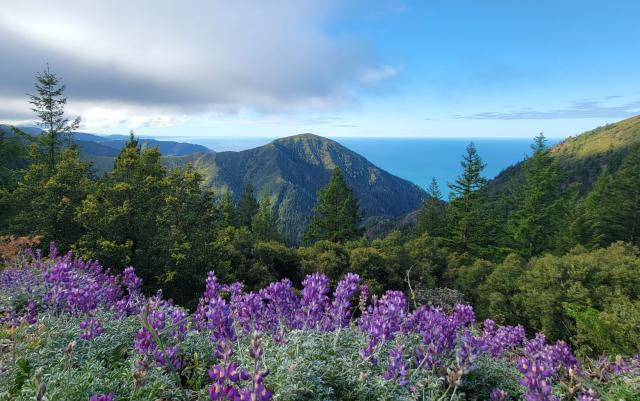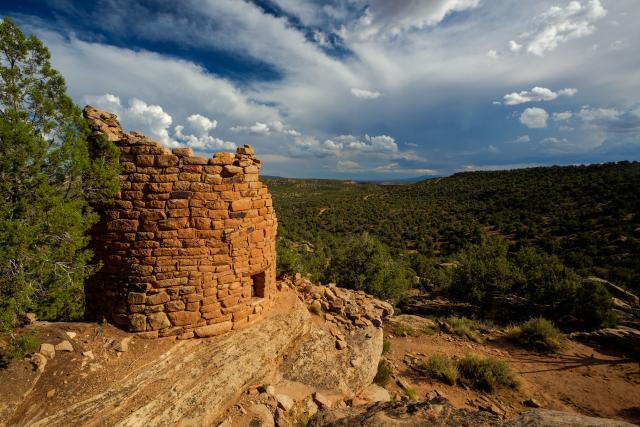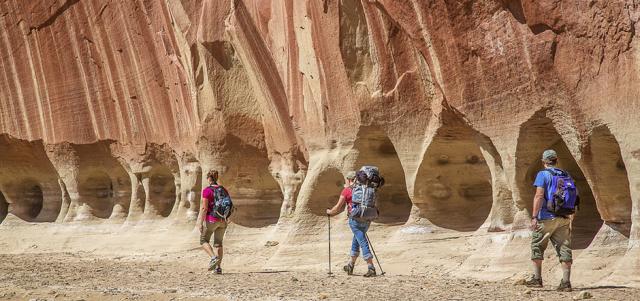National Conservation Lands build on BLM’s versatility
The Bureau of Land Management was established nearly 80 years ago as a multiple-use agency, a jack-of-all-trades that administered grazing permits, mining claims, mineral and timber sales, and land records. However, one critical role was missing – conserving natural, historical, cultural and other land values for the benefit of current and future generations. Despite managing some of the most iconic landscapes in the country, BLM did not have a widely recognized conservation function.

Congress started to change this by designating certain agency-managed lands for special protections – such as the King Range National Conservation Area in 1970 – and later included conservation authorities in the modern BLM organic act, the Federal Land Policy and Management Act of 1976 (FLPMA). The Act named specific lands that must be protected, such as the California Desert Conservation Area, and created Wilderness Study Areas as a designation. FLPMA has since been amended to include other conservation areas such as Yaquina Head Outstanding Natural Area in Oregon and the Jupiter Inlet Lighthouse Outstanding Natural Area in Florida.
But it was on July 12, 2000, when the National Landscape Conservation System was born and a leadership structure was applied to disparate land units that had one key commonality: the conservation, protection, and restoration of lands with specific natural, cultural, or scientific values. The system was codified by Congress in the Omnibus Public Lands Management Act of 2009 and renamed National Conservation Lands shortly thereafter. While FLPMA provides the tools to do all the work that the BLM undertakes, National Conservation Lands provides the structure for managing special designations, including guiding land management decisions consistent with the spectrum of conservation designations and public involvement.
Creating the National Conservation Lands 25 years ago put all BLM-managed National Monuments, National Conservation Areas, Wild and Scenic Rivers, Wilderness Areas, Wilderness Study Areas, and National Scenic and Historic Trails under a unified management system and reaffirmed that BLM could manage for conservation as well as other uses. Also included were other areas designated by Congress to be administered for conservation purposes, such as Steens Mountain Cooperative Management and Protection Area in Oregon.
Today, about 15% of the 245 million acres the BLM manages are in the National Conservation Lands. That means 85% of BLM acres allow for a wider variety of uses, and it is in managing these other uses where BLM is exceptional among the other three large federal land management agencies – the National Park Service, U.S. Fish and Wildlife Service, and Forest Service. While the other agencies have some multiple use responsibilities (most notably the Forest Service due to timber management), the BLM has the greatest variety of other uses on lands it manages. Multiple use is hard-wired into the BLM’s culture, so areas generally allow existing uses when included in the National Conservation Lands as long as the uses are compatible and do not degrade the values for which the lands were designated.

One example of this is Canyons of the Ancients National Monument in southwestern Colorado. When the monument was established in 2000 to protect this area’s dense archaeological sites, it was also home to active oil and gas drilling, with 81% of the 177,000-acre Monument under lease. In addition, most of the Monument was and is still open to grazing. These activities continue to co-exist while the area attracts visitors (approximately 157,000 annually) who want to see and learn about some of the more than 6,000 distinct archaeological structures there, many of them pre-Puebloan era.
Despite these lands being part of a national system, their management is intensely local. Often, it is a local community that advocates for creating a National Conservation Lands unit. The community will usually participate in the development of a management plan and remain active in operations as partners or a friends group. They know that how the unit is managed within its borders will have impacts beyond. For instance, the mix of multiple uses often benefits local economies through increased tourism and jobs related to traditional uses such as agriculture and some extractive industries.
Not surprisingly, recreation visitation like that at Canyons of the Ancients has emerged as a resource in demand by local populations for their own enjoyment and for the tourism they generate. When you have striking natural landscapes, such as those among the National Conservation Lands, people want to see them and pursue many forms of recreation, including hunting, fishing, camping, mountain biking, recreational shooting, wildlife viewing, and more.

A hallmark of the National Conservation Lands’ first 25 years has been the ability to balance multiple uses while sustaining the special values and objects that were the reason for establishing special designations in the first place. Twenty-five years ago, critics may have wondered why all these units were not just moved to another agency. But today, it is clear that the BLM’s versatility and resourcefulness has allowed it to carve its own unique version of conservation in the 21st century – one that is remarkably compatible with the broader BLM mission and the people it serves.
As BLM continues to celebrate the 25th anniversary of the National Conservation Lands, we have been sharing stories to encourage more people to visit these spectacular places and appreciate their history, natural wonder, and cultural significance. In addition to the blogs, podcasts, and story maps, check out our updated infographic and other content at https://www.blm.gov/NLCS25.
Beverly Winston, Experienced Services Program
Related Stories
- Using science to uncover mysteries of the Mesa archaeological site in Alaska
- “Where did my horse come from?” BLM launches a new way for adopters, trainers and others to learn about their wild horses and burros
- Lake Havasu Fisheries Improvement Program is the gift that keeps giving
- BLM is thankful for public lands volunteers
- Agua Fria National Monument: A desert oasis with a rich history and a vital present
